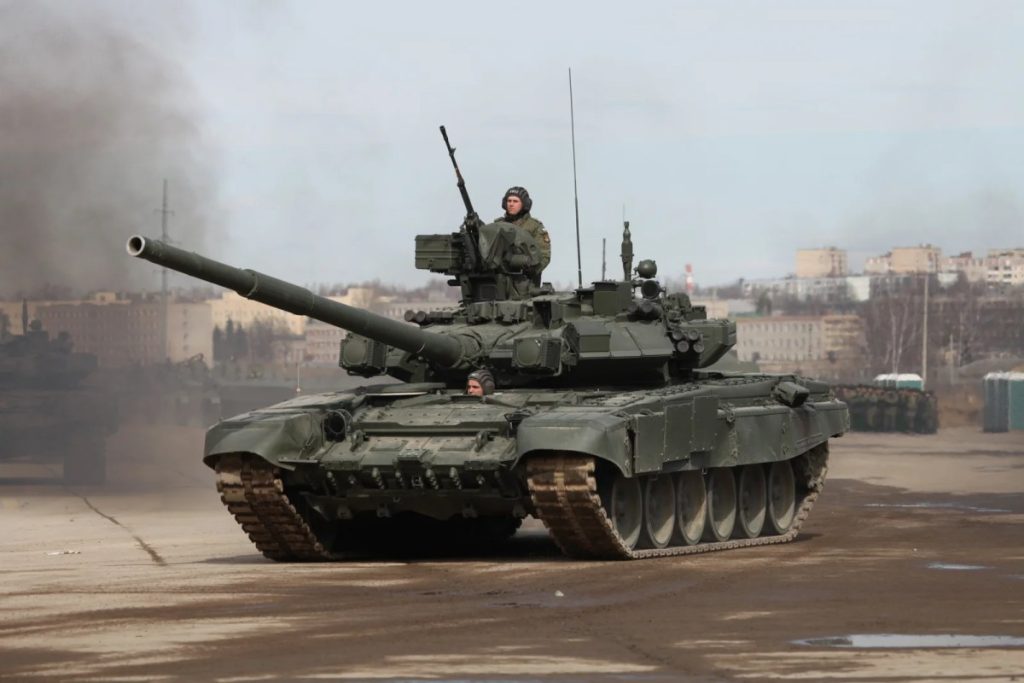
It was many years ago noted by Heinz Guderian, the father of Germany’s WWII Panzer force, noted that “the engine of the tank is a weapon just as the gun.” In Russia’s struggle against Ukraine, that adage has a foreboding sound to it—not because the guns have fallen silent, but because the engines are sputtering, the hulls are rusting, and the stocks are depleting.

From Soviet Abundance to Wartime Scarcity
When the Cold War ended, the Soviet Union had a pool of around 64,000 modern and semi-modern tanks, an unmatched force in size. Russia took most of the fleet with it, but as of 2020, the quantity had dropped to around 12,000, still close to twice as many as the U.S. Army inventory. Deep reserves—more than 7,300 tanks—were intended to provide strategic depth. Since February 2022, however, battlefield losses have reduced that buffer. Open-source intelligence then puts Russia’s stored tanks at merely 2,887, with less than a quarter usable.

Collapse of New Production
Russia’s primary tank factory, Uralvagonzavod, is producing far fewer new T-90Ms than planned. Analysts have observed the refurbishing of 20-year-old T-90A hulls with new turrets and optics, testifying that sanctions and manpower shortages are taking their toll on production capacity. Precision welding of new hulls depends on veteran laborers—many currently conscripted or fled—and foreign parts, particularly electronics, which are increasingly scarce.

The Rely on Outdated Models
With reserves of newer T-80s and T-90s dwindling, Russia has been forced to go back to Cold War relics. Scores of T-62s, the original 1961 models, are being modernized at the 103 Armored Repair Plant. Planned upgrades include thermal imaging, night vision, and thicker armor to repel anti-tank guided missiles like the Javelin, produced in the United States. But the 115mm gun of the T-62 and outdated armor remain unsuited for tank-on-tank fighting, reserving them instead for fire support missions against lighter targets.

Attrition Rates and Battlefield Losses
Russia had lost well over 11,000 tanks and infantry combat vehicles in Ukraine through early 2025, of which approximately 3,000 were T-80s. Countless T-64 and T-72 variants—produced 50 to 60 years ago—have been seized, destroyed, or abandoned. OSINT analyst Jompy’s satellite photos show depots like 1311 running out at a rate of 20 T-72Bs per month, with T-80BV stocks entirely exhausted. Once these stocks are run out, there will be nothing but T-62s and even T-55s remaining, just 16% of pre-war inventory.

Maintenance and Refurbishment Challenges
Reconditioning a tank from dilapidated condition is faster than manufacturing new, but not by any means imaginable. As Waffentraeger noted, “Even the most humiliating state tanks can be brought back up to 100%, in theory… but still faster than manufacturing a completely new T-90M.” Field service utilizes mobile workshops, spare part kits, and recovery vehicles, but deep operations show the shortage of heavy recovery machines. Cannibalization—sourcing parts from several crashed machines to restore some of them—is commonplace, which underlines chronic spare part shortages.

Vulnerabilities to New-Generation Anti-Tank Weapons
The Ukrainian inventory includes advanced systems like the FGM-148 Javelin, which employs a top-attack flight path against thin turret armor. Russian tanks, with ammunition stored below in carousel autoloaders, are susceptible to disarming “jack-in-the-box” kills when they penetrate. Ad hoc “cope cages” on turret tops afford minimal protection against tandem warheads, and experience on the battlefield confirms their uselessness.

Industrial and Logistical Burden
Russia’s annual output of new tanks is around 100–200, far lower than the replacement needs. Sanctions have incapacitated access to Western-manufactured subsystems, and mobilization has drained skilled labor. Repair plants like Omsktransmash can’t keep up; some bases’ satellite imagery shows long sections absent from obvious action. The rundown of BMP infantry fighting vehicles—from 7,100 pre-war to 2,579—mirrors the tank crisis, further straining mechanized formations.

Strategic Implications
The war has also become a challenge of stamina, with estimates suggesting that Russia could deplete existing war vehicles in late 2025 or early 2026. The deployment of aged armor by the Kremlin not only weakens performance in combat but also signals bigger industrial vulnerabilities. As Maria Snegovaya put it, “It is getting harder to maintain the appearance of normalcy” because of shortages of fuel and financial pressure due to Ukraine’s drone attacks on oil refineries.

Standardization Lessons
Russian military journals today emphasize “unification is more vital than innovation,” reminiscent of Soviet WWII lessons of focusing production on a limited number of standardized types. The Russian fleet today—split among T-72, T-80, and T-64 lines with non-compatible parts—complicates maintenance and resupply. Without standardization, the recapitalization of worn-out hulls will continue to be time-consuming and costly, and the number of quality armor units will continue to dwindle.
The clock is running out for Russia’s Tank Corps. Whether an economic debacle or the reality that it cannot mobilize mass-scale operations, the engineering reality remains bleak: without engines, the guns won’t shoot, and without hulls, no tanks can be deployed.


